The Weird and Wonderful World of Carnivorous Plants
The first carnivorous plants adapted 86.5 million years ago, and the most recent varieties came about 1.9 million years ago. The insect-gorging mechanisms they have adapted will leave you pondering the motives of your backyard flowers. We have a few varieties we have been successfully growing here on Kaua’i and our investigations continue to provide us with new information so that we may share with you and help you be successful in growing them yourself.
You would not suspect these elegant and strikingly beautiful plants perched innocently at the edge of wetlands would have such a sinister prerogative – to lure and digest its prey. Attracted by nectar, unsuspecting insects find themselves steeping in a cocktail of digestive enzymes. But why would a sweet looking plant diverge from the predictability of photosynthesis and absorption of nutrients from the soil around it? Well, interestingly, carnivory has evolved repeatedly – nine different times in five different species of flowering plants. This is called convergent evolution when an adaptation is repeated in multiple evolutionary cases in different locations around the world to fix a recurring problem, in this case, depletion of soil nutrients.
The nature of these carnivorous plants is to dwell on the margins of wet-lands – famously fluctuating water levels in acidic bog regions will flush-out nutrients, leaving the plants with truly little to work with. Herein lies the pathway to the strange and wonderful way in which plants began to capitalize on passing sources of nitrogen and phosphorous – bugs! Patiently evolving its leaves to form sticky surfaces, tantalizing aromas, glowing lures, or structural alleyways that seemingly whisper, “come in, you are most welcome here”. However, the tea these hosts offer is laced with juices that simmer the visitor into a palatable soup for the plant and not the invited guest! We are now finding evidence that some varieties including Purpurea, Nepenthes, and Sarracenia emit a florescent light that glows at night to further lure prey under the moonlight. One variety, Sarracenia Flava Flava – a gorgeous green North American pitcher plant – even goes so far as to offer up a narcotic called coniine, paralyzing its prey. As such, these plants are endlessly fascinating.
Sarracenia Flava Flava is just one of the six carnivorous varieties we are propagating here at Garden Ponds Nursery in Kilauea. We have three varieties of Sarracenia – a pitcher plant variety that is native to North America. These include the Leucophylla and the Purpurea Venosa in addition to the Flava Flava. We are also working to propagate a collector’s prize -Judith Hindle, which is a hybrid of Sarraceniaceae that has a gorgeous maroon hooded pitcher. In the Drosera variety, we have the tropical split Sundew. For Nepenthes’ we have a cascading Miranda with cream colored pitchers lined with dramatic veins of reds and pinks.
Being a water garden nursery, we are always experimenting with plants that grow along the edges of our beloved ponds. Marginal plants, add vertical interest, color variation, shade, and variety. If you expand to include carnivorous plants, the pesky insect-reduction in your home or gardens is a welcome feature! Mostly sun-loving, these carnivorous varieties can be placed in your water garden in rocks or in pots – keeping the plants happy with their moist roots. Until recently it was believed that combining fishponds and carnivorous plants might be problematic. After all, the carnivory adapted to fix a lack of nitrogen which fish waste provides plenty of. However, we are coming across new information that is telling us that the carnivorous plants are doing just fine in these settings.
We would like to invite you to do your very own experiments with these peculiar plants. We are offering a 50 percent discount on all Sarracenia Leucophylla (pictured) to encourage you to explore this fascinating hobby that provides so much entertainment and drama.
Garden Ponds is located beside the Kaua’i Mini Golf in Kilauea. We are open Wednesday to Sunday 12-5 pm. Call us at 808-828-6400 for more information.
Carnivorous Plants we are growing here at Garden Ponds:
Sarracenia (Pitcher Plants): Passive pit traps, these pitchers have features like downward-facing hairs, showy hoods, slippery lips, and tantalizing nectar that aid in luring their prey into fluids that slowly digest, leaving only the exoskeletons.
Native to North America, Sarracenia leucophylla
Native to North America, Sarracenia Flava Flava
Native to North America, Sarracenia Purpurea
A hybrid of Sarraceniae, Sarracenia Judith Hindle
Drosera (Sundews):
Native to Southern Australia, New Zealand and Tasmania, we have been growing the Drosera Binata or Tropical Split-Sundew here at our nursery on Kaua’i, Hawai’i in full sun/part sun using acidic soil with peat, perlite, and vermiculite, keeping the soil moist at all times. Top dress with sphagnum moss. Small white flowers form. Watch as it entraps small insects like flies and mosquitos in its sticky dew drops. Tendril-like arms curl around prey to further entangle the insects for digestion.
Nepenthes (Tropical Pitchers)
Nepenthes Miranda
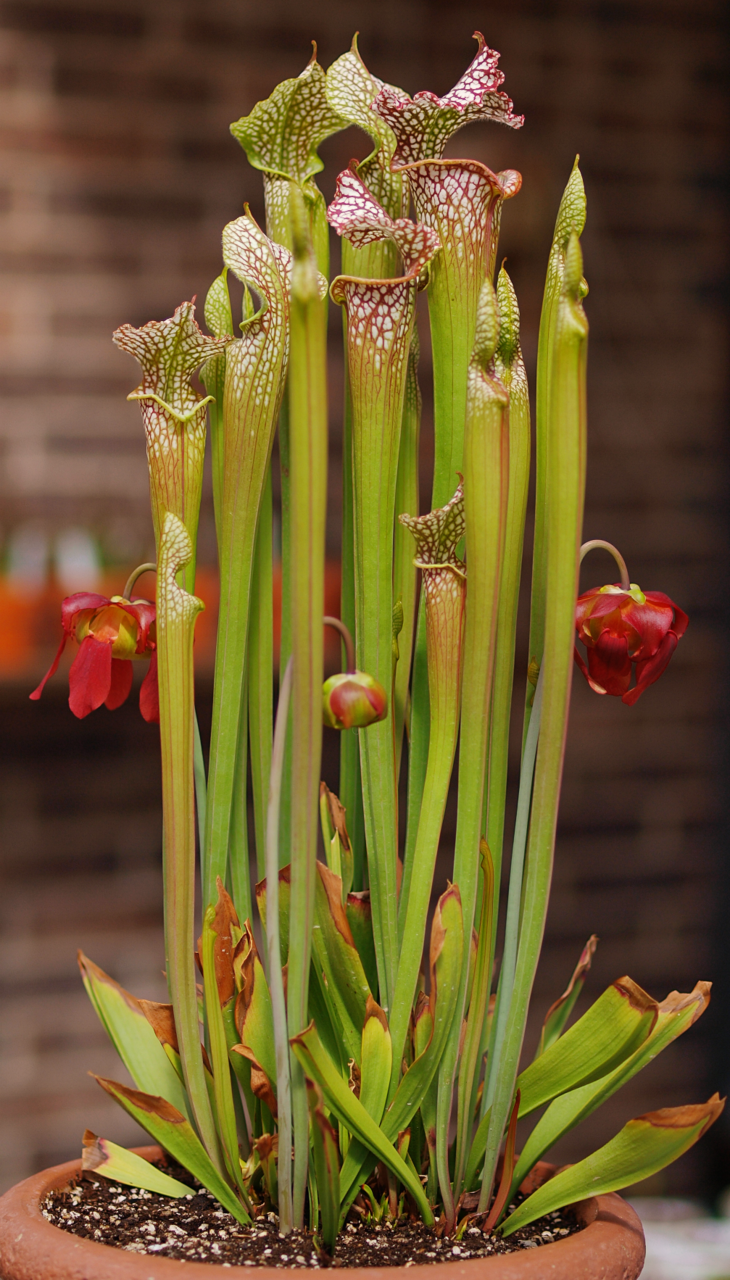
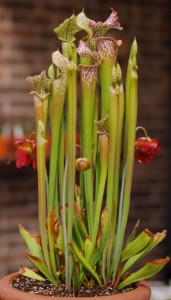
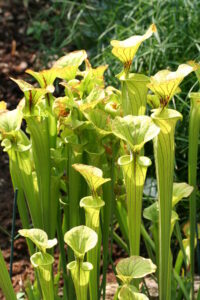
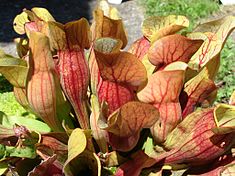
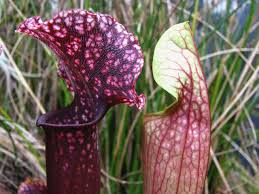
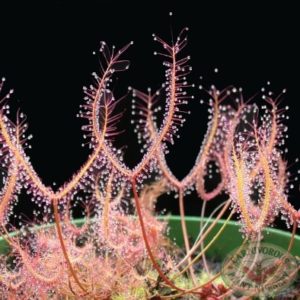
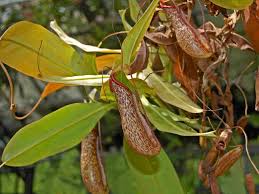
3 thoughts on “Carnivorous Plants Hawaii”
Hey I was wondering if you guys ship or know where I can find carnivorous plants on Oahu? Thank you
Do you carry carnivorous plant soil or the components to make it?
Yes, we have carnivorous plant mix available for sale and many carnivorous plants for sale….Nov/Dec is a great time to purchase and split the pitcher plants as they will wake up and be glorious in April.
Comments are closed.